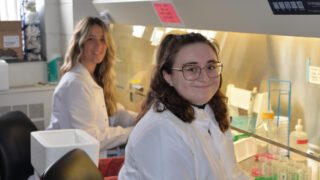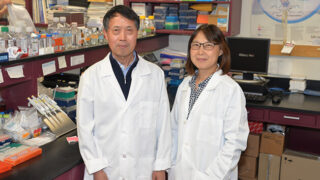Areas of Study
Signaling mechanisms of receptors and ion channels
Education
- Xi’an Jiaotong University School of Medicine1992MS
- Fourth Military Medical University1987MD
Research
Our primary research interests are to investigate the functional importance and signaling mechanisms of receptors and ion channels in cardiovascular and respiratory physiology and disease. Receptors and ion channels are key molecules that receive a variety of external signals that mediate cardiovascular and respiratory cellular processes. These responses may involve numerous signaling molecules, receptors, and ion channels to function complementarily and integratively. However, it is unclear which and how participating signaling molecules interact with each other. Moreover, there is a poor understanding of how receptors and ion channels interact with themselves to initiate and maintain cellular responses. Currently, we are specifically using various molecular biological, biochemical, biophysical, and other techniques with genetic animal models and human samples to tackle with the following research projects:
Molecular Processes for Cardiac Hypertrophy
Cardiovascular disease (CVD) is the number one cause of death in the world and accounts for 1 out of every 3 deaths in the United States. Risk factors for CVD is cardiac hypertrophy, which is a primary determinant of heart failure, cardiac arrhythmia, and sudden cardiac death. The molecular mechanisms underlying cardiac hypertrophy are not fully understood, and current therapies have limited efficacy in this devastating disease. Based on our previous publications and others, with our new preliminary data, we aim to determine if: (1) pressure load increases mitochondrial calcium levels; (2) increased mitochondrial calcium levels enhances reactive oxygen species (ROS) production; and (3) enhanced mitochondrial ROS production induces calcium release from the sarcoplasmic reticulum to cause and promote cardiac hypertrophy. We believe these findings will significantly enhance our understanding of the signaling mechanisms for cardiac hypertrophy, and ultimately aid in the development of new medications in the treatment of cardiac hypertrophy and associated cardiovascular diseases.
Signaling Mechanisms for Pulmonary Vascular Physiological and Pathological Functions
The lungs are the only internal organs constantly exposed to the external environment. Pulmonary vascular homeostasis is imperative to support the various physiologic functions of the lungs, and disruptions in this system leads to devastating, chronic pulmonary diseases. The signaling mechanisms for pulmonary vascular physiological and pathological functions have yet to be fully elucidated, and the available medications for pulmonary vascular diseases are often neither effective nor specific. In this current project, we are committed to determining the roles of calcium and ROS signaling in pulmonary artery smooth muscle cells in the development of pulmonary hypertension. We seek to identify key initial molecules, intermediate messengers, and end effectors involved in this disease process. We anticipate that the novel results from this project will lead to identification of specific and more effective molecular targets to prevent and treat pulmonary hypertension, and potentially other relevant diseases.
Publications
View Yun-Min Zheng's articles on the National Institute of Health's PubMed website.

